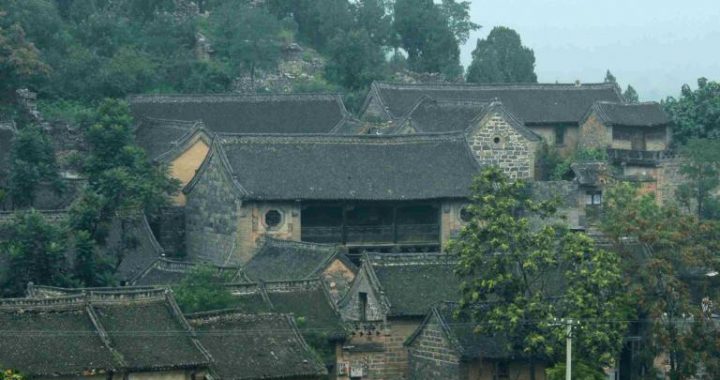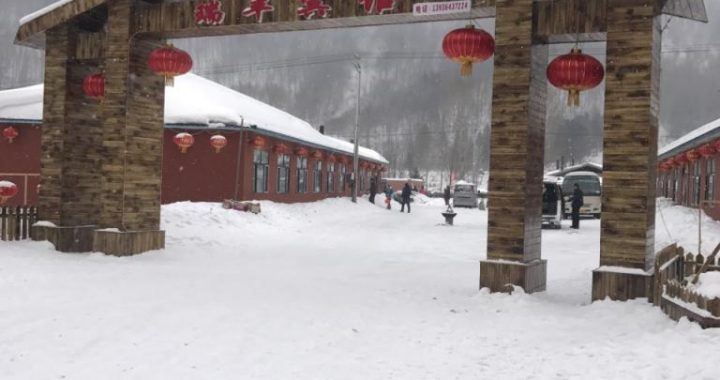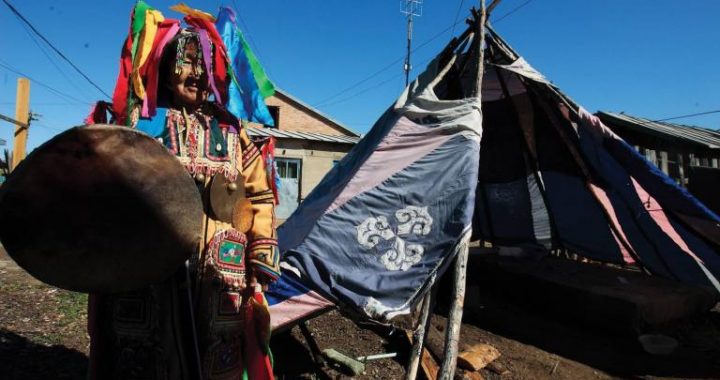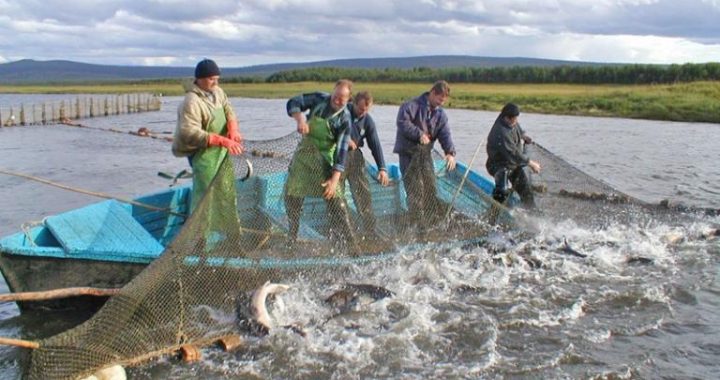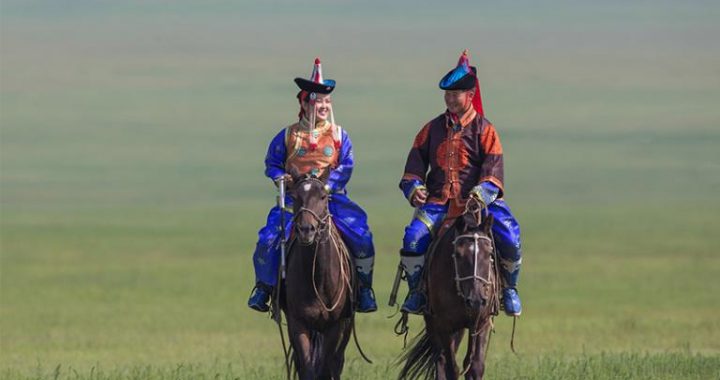Ewenki and Reindeer
4 min readPrimeval forests cover the Greater Hinggan Range in China’s northeast.In the depths of the forests live the Ewenki people,who make a living by hunting and rearing reindeer.They are the last of thehunting people in China today.Due to ecological changes,hunting has given way to raising reindeer as a major part of their life.Their reindeer culture has lasted for several thousand years.Most of the Ewenki people,30,000 in total,live in the Ewenki Autonomous Banner in today’s Inner Mongolia,some living in Heilongjiang Province with other peoples,such as the Han,the Mongolian and the Daur.

“Ewenki”means”people living in deep mountains and forests.”About 300 years ago,the Ewenki people came from Russia and settled down in Greater Hinggan Range,making a living by hunting.Because the reindeer are a huge part of their life, they are also called “reindeer people.”
How long have they kept reindeer? No one knows for sure. But their aged people believe it is as old as their history. Reindeer have big horns with many branches. They walk easily in marshes or snow and feed on moss in forests. Moss is a lower plant growing year-round on the west side of the mountains, where it is cold and damp. The slow growth of the moss and the fragility of forest ecology make it difficult for the Ewenki people to keep reindeer in a large group.
The Ewenki people have to migrate frequently. Migration is significant in their life and also a spectacular sight. In summer and autumn, they won’t stay in one place for longer than 10 days. In winter, a season to hunt grey mice, they move every two or three days. Usually, men go to a new place first to build an umbrella-shaped shed with 20-some thick pine branches,a shed about 3 meters tall and 4 meters in diameter. In summer, the shed is covered by birch bark while, in winter, by reindeer hide. All the animals will be gathered before a migration. Some with muzzles are tied to nearby trees, reserved as rides if they are gentle or to carry a load if they are not. Before they start, the Ewenki people will remove the cover from the sheds. The crucial aspect is putting out all fire. Fire is very important to the Ewenki people, who usually have one inside and one outside for cooking and warmth, plus a few bonfires to ward off mosquitoes. So far, not a single mountain fire has ever occurred after they have left a site.
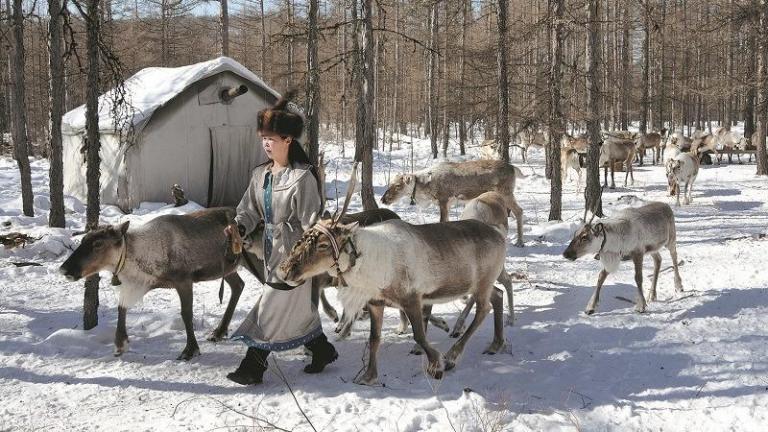
During migration, young women lead the animals walking in front, one family after another; then the aged people follow sitting on top of the reindeer, flanked by adults and children walking on both sides to herd the reindeer. Frolicking dogs’ barking, reindeers’ panting and people’s calling to each other compose an exciting symphony. This is the life of the Ewenki people. The reindeer, forest and Ewenki people have depended on one another in their life for several thousand years.
The reindeer culture can be seen in every component of their life, even on weddings. Parents and relatives will go with the bridegroom to the bride’s home. They walk in a neat line, headed by an agedman holding a mystical image in the front, and a person leading a reindeer in the end. The family members of the bride wait in front of their home. When the bridegroom’s team arrives, the bride’s family presents the bridegroom with a birch box along with a mini-sculpture of a reindeer head as an auspicious token. Then, the young couple selects the two finest animals from the bride’s family’s herd. The young couple leads them, one for each, to walk three circles before wine is served. After the wedding meal, the bride and the bridegroom take the two reindeer home.
As the forest is becoming smaller, the endangered reindeer are also under protection. One attempt is to rear them in enclosed pens. However, in their evolution, their trotters have long been accustomed to treading freely on marsh or soft earth covered with moss and snow and following them in deep forests is probably what the Ewenki people really want as part of their life.
The Ewenki people are forest people, having a deep love for birch trees. With birch bark, the Ewenki people make instruments and daily utensils, both attractive and practical. Thus, the birch-bark culture was born. Under their nimble hands, birch bark transforms into different items for daily life: basins, boxes, bows, boats and water barrels. With decorative geometric shapes, animal or plant images on them, these objects exhibit reindeer-rearing and hunting culture of elegant, primitive, geological beauty that cannot be found anywhere else.

